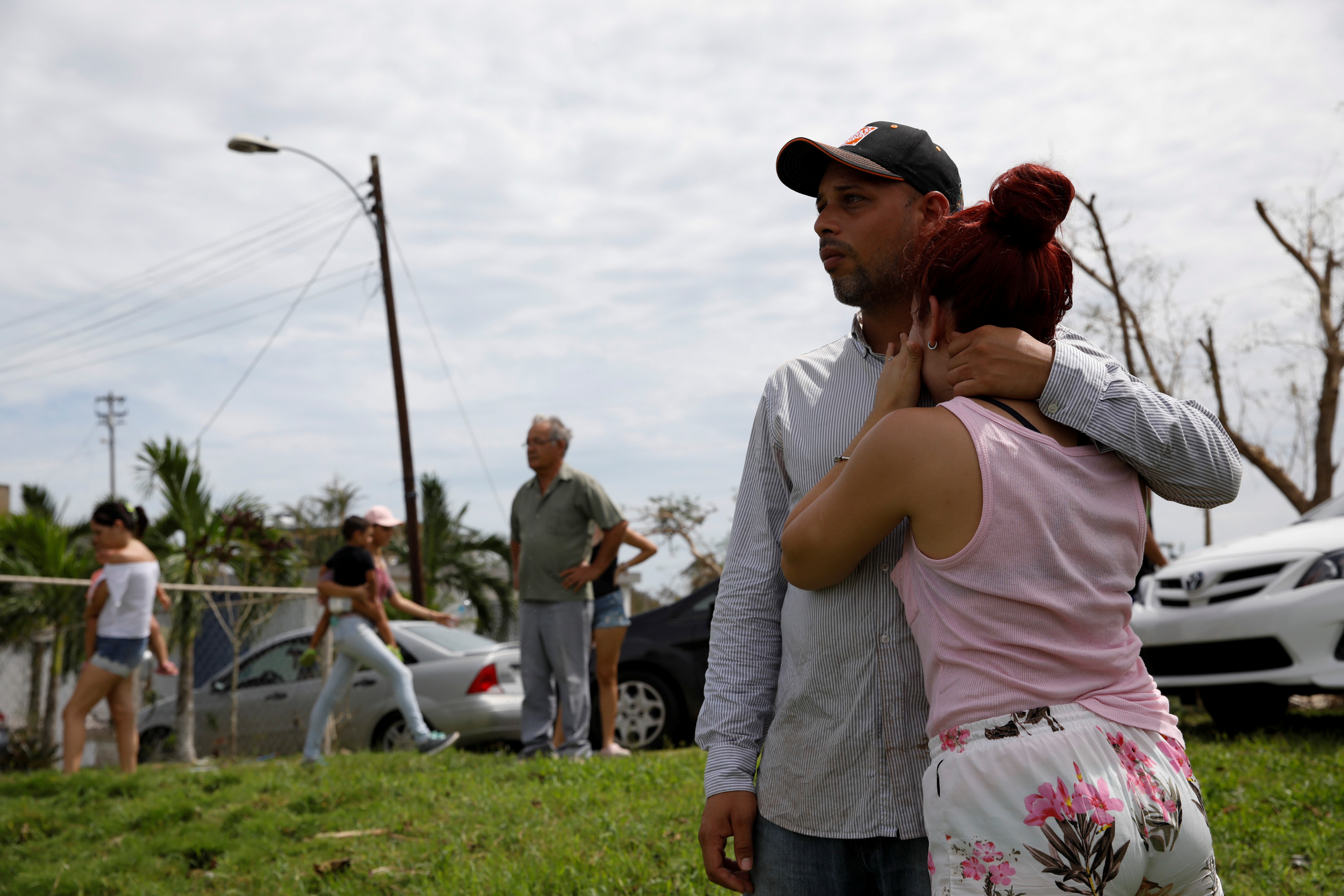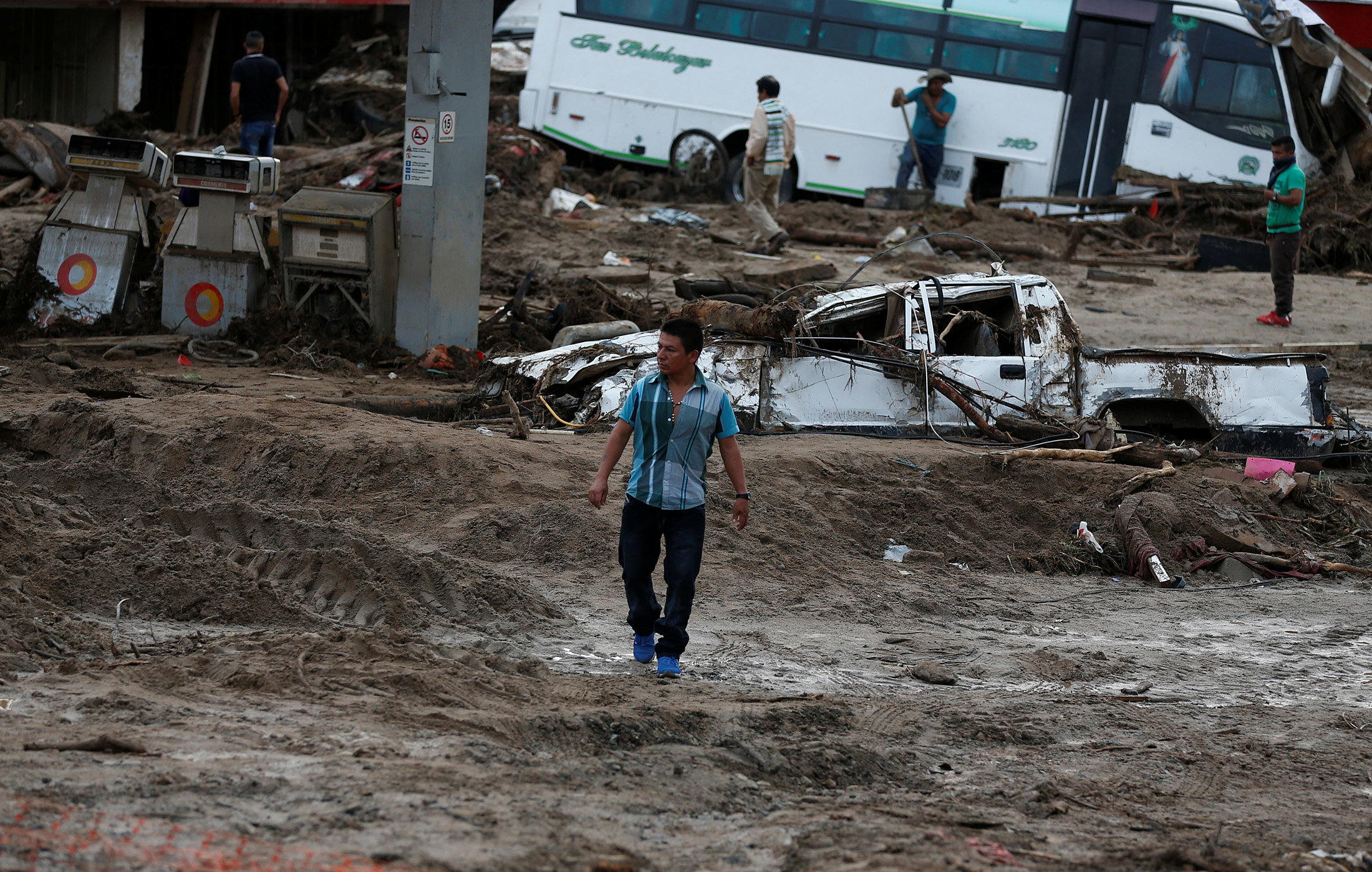
By Makini Brice and Sarah Marsh
LES CAYES, Haiti/GUANTANAMO, Cuba (Reuters) – Hurricane Matthew, the fiercest Caribbean storm in almost a decade, hit Cuba and Haiti with winds of well over 100 miles-per-hour on Tuesday, pummeling towns, farmland and resorts and forcing hundreds of thousands of people to take cover.
Dubbed by the U.N. the worst humanitarian crisis to hit Haiti since a devastating 2010 earthquake, the Category Four hurricane unleashed torrential rain on the island of Hispaniola that Haiti shares with the Dominican Republic.
As it barreled towards the United States, the eye of the storm had moved off the northeastern coast of Cuba by Tuesday night, the Miami-based National Hurricane Center (NHC) said.
At least four people were killed in the Dominican Republic by collapsing walls and mudslides, as well as two in Haiti, where communications in the worst-hit areas were down, making it hard for authorities to assess the scale of the damage.
“Haiti is facing the largest humanitarian event witnessed since the earthquake six years ago,” said Mourad Wahba, the U.N. Secretary-General’s Deputy Special Representative for Haiti.
Over 200,000 people were killed in Haiti, the poorest nation in the Western Hemisphere, by the January 2010 earthquake.
Matthew was blowing sustained winds of 140 mph (230 kph) or more for much of Tuesday, though as night fell, the windspeed eased to about 130 mph, the NHC said.
Early reports suggested that Cuba had not been hit as hard as Haiti, where the situation was described as “catastrophic” in the port town of Les Cayes.
In the Cuban city of Guantanamo, streets emptied as people moved to shelters or inside their homes.
Matthew is likely to remain a powerful hurricane through at least Thursday night as it sweeps through the Bahamas towards Florida and the Atlantic coast of the southern United States, the NHC said. The storm is expected to be very near the east cost of Florida by Thursday evening, the center added.
The governor of South Carolina ordered the evacuation of more than 1 million people from Wednesday afternoon.
With communications out across most of Haiti and a key bridge impassable because of a swollen river, there was no immediate word on the full extent of potential casualties and damage from the storm in the poorest country in the Americas.
But Pentagon spokesman Peter Cook told reporters in Washington the U.S. Navy was considering sending an aircraft carrier and other ships to the region to aid relief efforts.
The United States has already offered Haiti the use of some helicopters, said Haitian Interior Minister Francois Anick Joseph, who added that damage to housing and crops in the country was apparently extensive.
Twice destroyed by hurricanes in the 18th century, Les Cayes was hit hard by Matthew.
“The situation in Les Cayes is catastrophic, the city is flooded, you have trees lying in different places and you can barely move around. The wind has damaged many houses,” said Deputy Mayor Marie Claudette Regis Delerme, who fled a house in the town of about 70,000 when the wind ripped the roof off.
One man died as the storm crashed through his home in the nearby beach town of Port Salut, Haiti’s civil protection service said. He had been too sick to leave for a shelter, officials said. The body of a second man who went missing at sea was also recovered, the government said. Another fisherman was killed in heavy seas over the weekend as the storm approached.
STARTING FROM SCRATCH
As much as 3 feet (1 meter) of rain was forecast to fall over hills in Haiti that are largely deforested and prone to flash floods and mudslides, threatening villages as well as shantytowns in the capital Port-au-Prince.
The hurricane has hit Haiti at a time when tens of thousands of people are still living in flimsy tents and makeshift dwellings because of the 2010 earthquake.
“Farms have been hit really hard. Things like plantains, beans, rice – they’re all gone,” said Hervil Cherubin, country director in Haiti for Heifer International, a nonprofit organization that is working with 30,000 farming families across Haiti. “Most of the people are going to have to start all over again. Whatever they accumulated the last few years has been all washed out.”
Matthew was churning around 20 miles (32 km) northwest of the eastern tip of Cuba at 11 p.m. EDT (0300 GMT). It was moving north at about 8 miles per hour (13 kph), the NHC said.
Cuba’s Communist government traditionally puts extensive efforts into saving lives and property in the face of storms, and authorities have spent days organizing teams of volunteers to move residents to safety and secure property.
The storm thrashed the tourist town of Baracoa in the province of Guantanamo, passing close to the disputed U.S. Naval base and military prison.
The U.S. Navy ordered the evacuation of 700 spouses and children along with 65 pets of service personnel as the storm approached. U.S. President Barack Obama had earlier canceled a trip to Florida scheduled for Wednesday because of the potential impact of the storm, the White House said.
A hurricane watch was in effect for Florida from an area just north of Miami Beach to the Volusia-Brevard county line, near Cape Canaveral, which the storm could reach on Thursday, the hurricane center said.
Tropical storm or hurricane conditions could affect parts of Georgia, South Carolina, and North Carolina later this week, even if the center of Matthew remained offshore, the NHC said.
Governor Rick Scott declared a state of emergency for Florida on Monday, designating resources for evacuations and shelters and putting the National Guard on standby.
(Reporting by Joseph Guyler Delva in Port-au-Prince and Makini Brice in Les Cayes; Additional reporting by Marc Frank in Cuba and Jorge Pineda in Dominican Republic; Writing by Frank Jack Daniel and Dave Graham; Editing by Simon Gardner, Sandra Maler and Nick Macfie)













